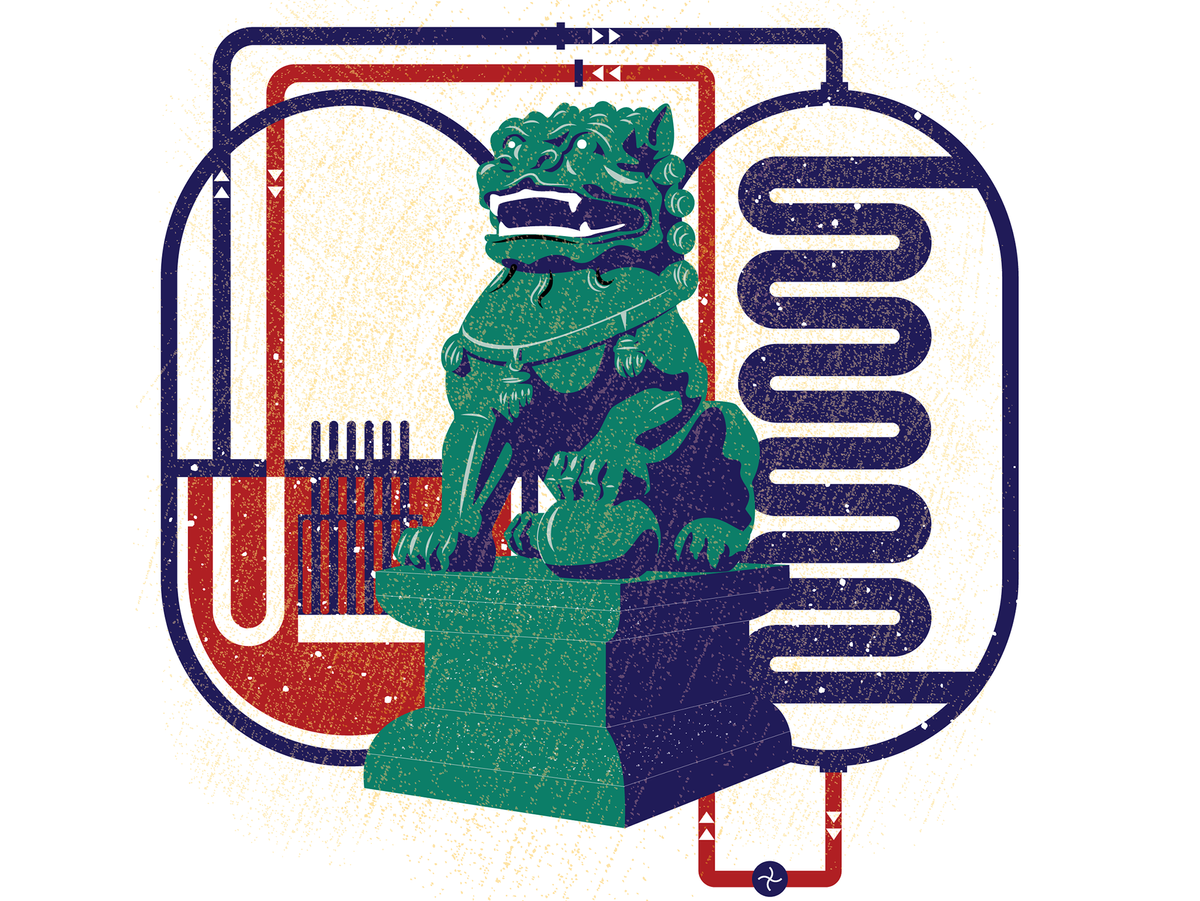China’s New Breeder Reactors May Produce More Than Just Watts
They could also make weapons-grade plutonium

Jutting out from the coast of China’s Fujian province, Changbiao Island may seem small and unremarkable. It is anything but. This is where the China National Nuclear Corp. is building two fast-neutron nuclear breeder reactors, the first of which is slated to connect to the grid in 2023, the second in 2026. So China could start producing weapons-grade plutonium there very soon.
They are called breeder reactors because they produce more nuclear fuel than they consume. According to Chinese authorities, the ones on Changbiao are civilian power reactors, designed to generate 600 megawatts of electricity each, which amounts to a little more than 1 percent of the total capacity of China’s nuclear power sector. But each reactor could also yield up to 200 kilograms of weapons-grade plutonium each year, enough for about 50 nuclear warheads—which is making nuclear-arms-control experts in Western countries nervous.
This article is part of our special report Top Tech 2023.
“China is in the middle of a big buildup of its nuclear-weapon arsenal,” says Frank von Hippel, a physicist and nuclear-policy expert at Princeton University. “My belief is that one of the purposes of these reactors is to produce weapons-grade plutonium for that buildup.”
Fast breeder reactors date back more than half a century, when the global nuclear community thought there wouldn’t be enough uranium fuel available for the nuclear-power industry. Natural uranium is composed of only 0.7 percent uranium 235 (U-235), which can support the fission reactions needed for generating power. The rest is U-238, which cannot sustain a chain reaction. But when bombarded with neutrons, U-238 is readily transformed into an isotope that can: plutonium-239.
Breeder reactors use plutonium as the fissile fuel in the core, which is surrounded by a blanket rich in U-238. Fast neutrons—that is, ones with 1 megaelectron-volt or more of kinetic energy—split the plutonium atoms, releasing secondary neutrons that are captured by the U-238 and convert some of that U-238 into plutonium. Liquid sodium is used as a coolant because it does not slow down neutrons as much as water does. Weapons-grade plutonium can be separated chemically from the blanket.
While many countries explored the possibility of using fast breeder reactors early on, only one of the breeder reactors built in France, Germany, the United Kingdom, or the United States survived into the 21st century before it, too, was shut down. Japan also developed a fast breeder power reactor, one that proved to be a costly mistake, prompting a decision in 2016 to decommission it.
Not so in China, India, and Russia. India has had a breeder-reactor prototype under construction for about two decades, von Hippel says. Starting even earlier, Russia has built two fast breeder reactors, which are still operating today . But Russia has decided not to build another one until the 2030s, because they are more expensive than conventional water-cooled reactors.
Each reactor could also yield up to 200 kilograms of weapons-grade plutonium each year, enough for about 50 nuclear warheads.
The new breeder reactors in China, meanwhile, are demonstration projects, the second step in a three-step program to develop fast breeder reactors to reduce the country’s dependence on coal. The first step was a 20-MW experimental fast breeder reactor near Beijing, which was begun in 2000 but took many years to complete and connect to the grid. The country will soon decide whether to continue to the third step of building a commercial 1,000-MW breeder reactor. The China National Nuclear Corp. did not respond to inquiries from Spectrum about its plans.
On its own, building a fast breeder reactor is not necessarily a signal that a country intends to produce nuclear weapons, says Jake Hecla, a graduate student in nuclear engineering at the University of California, Berkeley. But the reactors slated for Changbiao are viewed with suspicion in the West, particularly after the recent discovery that China is constructing missile-silo fields in three locations.
China already has between 3 and 5 tonnes of plutonium for warheads, Hecla says. And they are building 250 additional silos. “So they likely need more plutonium,” he says. “One way of doing this would be to create civilian infrastructure that is dual use, and this fast breeder program is perfect for that. If China flipped on old plutonium-processing reactors, the international response would be strong and negative. This provides a way to get around that.”
An added concern is that China stopped voluntarily disclosing its civilian plutonium stockpiles to the International Atomic Energy Agency in 2018. Other nations with plutonium stockpiles, such as Japan, France, and the United States, “work with the international community to disclose their plutonium stockpiles, providing reassurance that the material is not being misused,” says Hecla.
These concerns are valid in light of the expansion of China’s nuclear arsenal and the modernization of its nuclear weapons, says Hui Zhang, an expert on China’s nuclear policies at Harvard University. But, he points out, there are more straightforward ways to produce weapons-grade plutonium.
“Direct plutonium production could make much more fuel each year,” says Zhang. “Because China is already a nuclear state, if they really wanted to build up [their] nuclear-weapon arsenal, it would’ve been better to dedicate a plutonium fast breeder reactor for that purpose, not to build a reactor for civilian purposes.”
But no matter how they intend to do it, if Chinese weapons builders are trying to catch up to the United States, which has nearly 88 tonnes of plutonium, they still have a long road ahead.
This article appears in the January 2023 print issue as “China’s New Breeder Reactors May Produce More Than Just Watts .”

Top Tech 2023
Top Tech 2023: A Special Report
Preview exciting technical developments for the coming year.
Can This Company Dominate Green Hydrogen?
Fortescue will need more electricity-generating capacity than France.
Pathfinder 1 could herald a new era for zeppelins
A New Way to Speed Up Computing
Blue microLEDs bring optical fiber to the processor.
The Personal-Use eVTOL Is (Almost) Here
Opener’s BlackFly is a pulp-fiction fever dream with wings.
Baidu Will Make an Autonomous EV
Its partnership with Geely aims at full self-driving mode.
China Builds New Breeder Reactors
The power plants could also make weapons-grade plutonium.
Economics Drives a Ray-Gun Resurgence
Lasers should be cheap enough to use against drones.
A Cryptocurrency for the Masses or a Universal ID?
What Worldcoin’s killer app will be is not yet clear.
The company’s Condor chip will boast more than 1,000 qubits.
Vagus-nerve stimulation promises to help treat autoimmune disorders.
New satellites can connect directly to your phone.
The E.U.’s first exascale supercomputer will be built in Germany.
A dozen more tech milestones to watch for in 2023.
- NRDC's Tom Cochran Assesses Breeder Prospects ›
- China Says It’s Closing in on Thorium Nuclear Reactor ›
- More Missiles Than Megawatts ›


